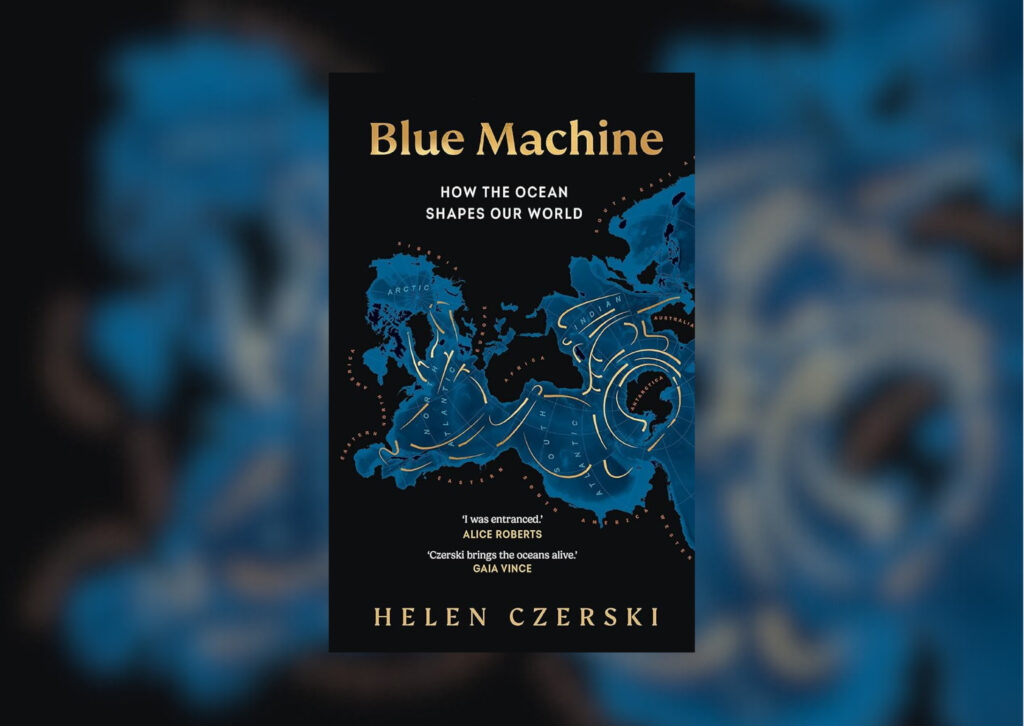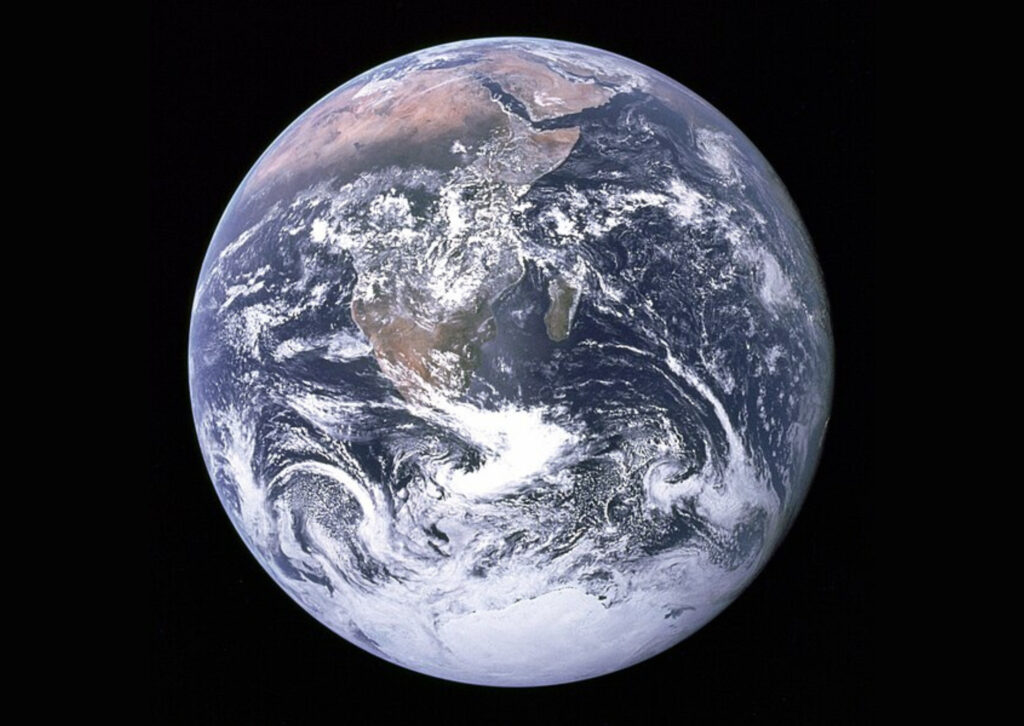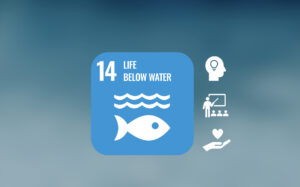Blue Machine
How the Ocean Shapes Our World – by Helen Czerski
Reviewed by Marte Greefs (co-founder & operations manager at Go Ocean)

The following quote introduces the last chapter of Blue Machine: “You can’t protect what you don’t understand. And you won’t, if you don’t care.” by Lacy Veach, NASA astronaut. It’s exactly because of the meaning behind this quote, that we are adding a book review to our Go Ocean news articles.
The ocean always looks the same from our ‘land’ point of view. It looks like a vast mass of water that is only moving a little because of the tides, that sometimes faces heavy weather, with massive waves in some surfers’ paradise or with still ice-cold water around the poles. However, this perspective couldn’t be further from the truth.
Physicist and oceanographer, Helen Czerski, describes the ocean as an engine, continuously moving, changing, circulating energy, sustaining life, and providing raw materials. It’s an engine we depend on.
Understanding the ocean one story at a time
The first three chapters of the book teach you the basic characteristics of the ocean engine. They talk about temperature, salinity, and gravity. And while this sounds logical, it’s more complex and interwoven than you could imagine.
The next chapters explain how light and sound pass through the water, which materials and organisms are ocean passengers, and which species are seen as the ocean voyagers. The complex relationships between all the ecosystems, animals, and humans are explored deeply, taking into account climate, history, and culture.
I enjoyed reading these six chapters so much. I had to interrupt my partner in whatever he was doing to tell him what I learned, again and again. After 350 pages of fascinating content, I tried to hold my thoughts, but my partner suffered until the very last page.

The last chapter cuts deep
Professor Czerski did an amazing job in teaching a non-expert the workings of the blue machine. She held my attention from start to finish, making me appreciate the ocean even more. But then, the book hits you with chapter 7.
The situation of the ocean is not looking great. But with the correct perspective, knowledge, appreciation, and humble understanding of our ocean engine as a major part of the life support capacity of our planet, we should be able to care and, therefore, act.
“… with a deeper knowledge of the ocean comes the responsibility to be good citizens of our ocean planet.”
Citizens of a blue planet
After going through the last pages repeatedly, here are the key points I’ve gathered:
We should all together build an ocean perspective into our worldview, meaning that we should spread awareness, share learnings, and start conversations. Afterwards, we will be able to understand, appreciate, and act.
We have to choose to stop causing damages to our oceans. It is devastating to realize what the effects are of the use of fossil fuels on the delicate balance of the ocean’s ecosystems.
We should start to repair the damages that have already been done. It will have to be a combination of cutting emissions, changing behaviors, and actively repairing what we mistreated. This will result in a healthy ocean engine that again serves- and protects life on earth by capturing carbon, preventing coastal erosion… so that future generations can experience the beauty of our planet as we did.
The Blue Marble, taken by either Ron Evans or Harrison Schmitt of the Apollo 17 crew in 1972.

Are you ready to be a citizen of a blue planet?
- Schedule a blue awareness session for your company, clients, network… whoever needs it.
- Contact our Go Family ecosystem to map, calculate, and reduce your emissions and optimize your business for a better future.
- Start with the active restoration of marine ecosystems with Go Ocean.
We have taken so much from nature, and now it’s time for us to give back.
Found this article interesting? Spread the word.

Revitalizing Our Oceans: The Critical Role of Businesses and SDG 14
This article explores why businesses should become stewards of the ocean, embracing sustainable practices and restoration initiatives to ensure a thriving marine environment for future generations.

Unlocking the mysteries of Blue Carbon Ecosystems
In this article, we take you with us to explore one of the ways the ocean is impacting the carbon cycle, namely through its blue carbon ecosystems.






